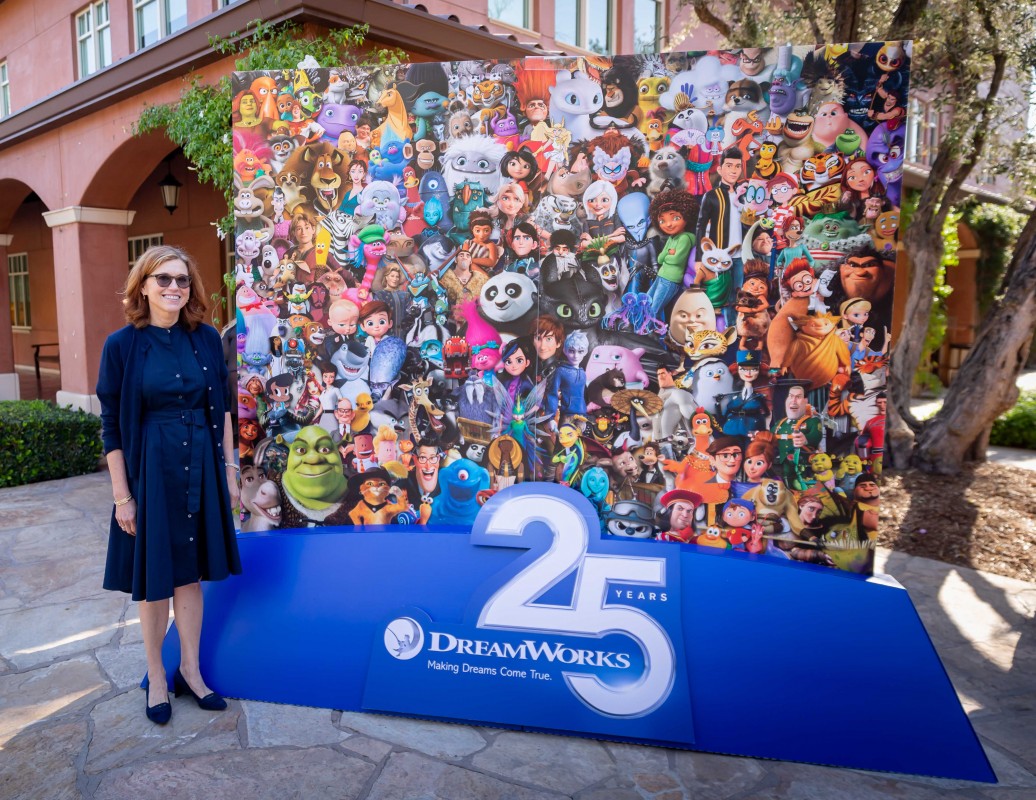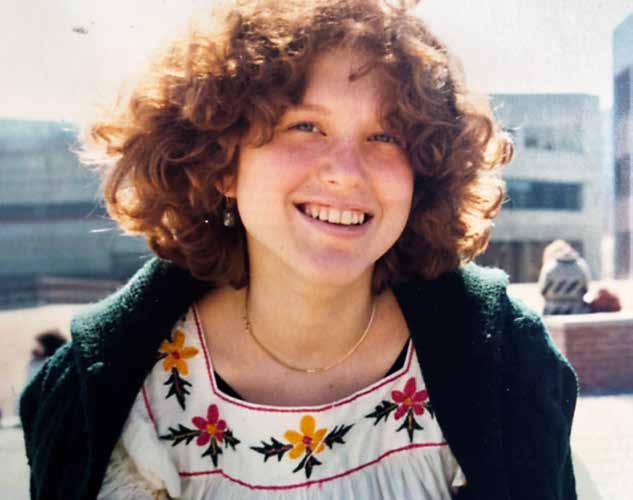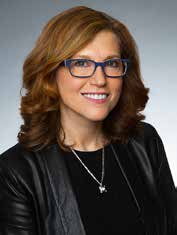From Binghamton to Hollywood
As DreamWorks Animation president, Margie Cohn ’78 is among the most powerful entertainment executives today

Over more than three decades in the entertainment business, Margie Cohn ’78 has climbed the ladder to become one of Hollywood’s most powerful and respected executives.
During her 26 years at the cable network Nickelodeon, she oversaw animated and live-action hits such as Avatar: The Last Airbender, SpongeBob SquarePants, The Fairly OddParents, iCarly and the Kids’ Choice Awards.
Media mogul Jeffrey Katzenberg recruited Cohn in 2013 to launch DreamWorks Animation’s television division, creating programming inspired by films from DreamWorks and Universal Pictures as well as original series. Since then, DreamWorks Animation has won 25 Emmy Awards for shows such as Trollhunters, The Adventures of Puss in Boots, Spirit Riding Free, The Epic Tales of Captain Underpants, She-Ra and the Princesses of Power and Kung Fu Panda: The Paws of Destiny.
Just don’t ask her to name her favorite project — that’s like picking a favorite child.
“Sometimes there are magical moments when things come together and everyone’s on fire,” she says. “You love it, you know you’re making something great and people are having fun doing it. Then sometimes you go through hell and everything’s difficult. You still love that project because you’ve worked so hard to make it great.”
Cohn is a member of both the Academy of Motion Picture Arts and Sciences and the Academy of Television Arts and Sciences. In 2019, she was inducted into the Variety Hall of Fame and named to the Power 100 list in The Hollywood Reporter’s “Women in Entertainment” issue. Her ties to Binghamton remain strong: In 2017, the University presented Cohn with an Alumni Achievement Award.
In an interview, she discussed her time at Binghamton — where she earned a bachelor of arts in fine art and English — as well as her journey to the Tinseltown stratosphere.
Q: How did you first become interested in art?
A: I grew up in Mount Vernon, N.Y., and I always amused myself by drawing and got a lot of positive feedback on my art. When I got to college, I realized how much better everybody was. I didn’t really draw representationally — I had a knack, but it wasn’t a deep natural talent. As a result, I had a lot of work to do.
Q: How did you end up at Binghamton?
A: I graduated from high school after my junior year. It was a tumultuous time, and a lot of people did it. I decided to go to SUNY Albany even though I had never seen it; I just wanted a fresh start.
I think the SUNY system is wonderful, but Albany was definitely not for me. It felt like people were all on these very serious career tracks and I wanted to be creative and explore and enjoy life — to really get a sense of liberal arts without buckling down to one specific thing.
After my sophomore year, I left and earned money and then did a junior year abroad. I met somebody there who convinced me to come back and go to Binghamton. I did, and I loved it. I was sorry I hadn’t started there freshman year. I was very, very happy once I got there and found teachers who gave me some lessons that I took forward, because I still had the intention of being an artist at that point. I use them in my career even now.
I found teachers who inspired me and taught me fundamentals about an approach to work and its place in one’s life that I still draw upon today.
Q: How did you go from Binghamton to the entertainment industry?
A: I had this loose idea that maybe I could be an art professor, but I knew I’d have to build a portfolio. So, I worked for a year after graduation; I was able to rent a studio, and I painted and I drew. Then that same friend who brought me to Binghamton and I saved our money, and we lived in Italy for a year. I drew and painted and did all sorts of things.
The time there made me realize I was a social person and I thrived in a collaborative setting. I didn’t think I was going to make it as a fine artist.
I landed a job for an art and antiques auction on public television, and they let me produce the travelogues for trip packages. I thought, “Oh my God — storytelling, visual excitement, community collaboration. This is where I was meant to be.”
I freelanced for another year and ended up at Nickelodeon. My career took off because I was on the ground floor of a growing business and they wanted smart, creative people. If you had a great idea, they would be happy to produce it. I stayed there for 26 years, learned an enormous amount and made some fun content that touched a generation of kids.
Q: What inspired the move to DreamWorks Animation?
A: The opportunity was impossible to turn down — the idea that I could build an animation studio from scratch and pick all the people I wanted to work with. To build the studio and then try to sell individual shows was difficult, but we had a three-year runway of commitments from Netflix. It was an incredible deal.
DreamWorks was a brand that I always respected. It stood for quality and innovation, and the idea that we could create a library of shows that stand proudly alongside the movies was a challenge that felt irresistible.
Q: In 2013, it was still a new concept to have exclusive streaming content on a platform like Netflix.
A: Totally. It changed how we approached creative decisions. For the first time, we didn’t have to worry about our lead-in and whether it was going to be compatible. We didn’t have commercials, so we didn’t have to worry that we were doing a show for all kids and then halfway through there’d be a doll commercial that would have the boys running to the hills. We could make things for just animation lovers, for people who loved storytelling — the same people who went to DreamWorks movies.
So, it was unbelievably liberating. We had to shake off all the things that we knew about creating kids’ and family programming and evolve to another standard. That was so much fun, and it prepared me to take on the whole studio and be producing movies now.
Q: It seems that DreamWorks Animation is a friendly place for creative women, from executives like you as well as writers, directors and artists. Does that come from when Jeffrey Katzenberg was building the team?
[Katzenberg left the company in 2016, when NBCUniversal acquired DreamWorks Animation for $3.8 billion.]
A: I do think that Jeffrey was “gender agnostic.” He loved people who could get it done, and so he was drawn to talent.
I’m a woman, and I’ve hired other women. I’ve also hired men. What became important to us was to mentor the next generation of producers, artists and storytellers. A lot of them were young women, and we tried to put them into positions where they got mentored and could succeed, because without feeling like they’re supported, it’s very hard to get to the next level.
Q: What was it like taking over the entire animation division last year?
A: It was both exhilarating and terrifying. I had to build my team and gain credibility super-quickly because we have to keep the movie pipeline running. There are so many talented people at DreamWorks, and they were very generous with me. We are also experiencing seismic change in our industry, but we are coming through it together.
Q: Do you have a proudest moment in your life?
A: One of the proudest moments was getting named president of DreamWorks Animation. I also was inducted into the Variety Hall of Fame — my kids and my husband came. I kept thinking: This is not the dream I had for myself, but here I am. My kids were so proud of me.
Over my career, I stayed true to myself. I’ve done great creative work with very interesting people, and I’ve always protected my personal life. I feel that I’ve been very lucky.



